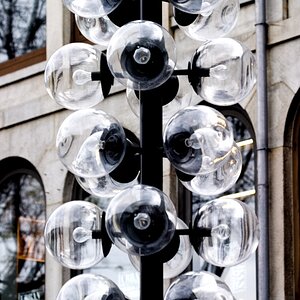Navigation
Install the app
How to install the app on iOS
Follow along with the video below to see how to install our site as a web app on your home screen.

Note: This feature currently requires accessing the site using the built-in Safari browser.
More options
You are using an out of date browser. It may not display this or other websites correctly.
You should upgrade or use an alternative browser.
You should upgrade or use an alternative browser.
Been Discussed a lot, but some beginner might find this useful
- Thread starter table1349
- Start date
Ysarex
Been spending a lot of time on here!
- Joined
- Nov 27, 2011
- Messages
- 7,135
- Reaction score
- 3,682
- Location
- St. Louis
- Can others edit my Photos
- Photos OK to edit
Yeah, one of the first is Tony Northrup which pretty much negates the comments.
There are comments there from Iliah Borg which emphatically negate the article.
Joe
Derrel
Mr. Rain Cloud
- Joined
- Jul 23, 2009
- Messages
- 48,225
- Reaction score
- 18,941
- Location
- USA
- Website
- www.pbase.com
- Can others edit my Photos
- Photos OK to edit
Yeah, one of the first is Tony Northrup which pretty much negates the comments.
Yet, Iliah Borg's comments are from one of the preminent 3rd-party raw software authors of the last 15 years, so...
Exposure as a photo term has long had NO reference to ASA or ISO speeds, and never did. It was always
Exposure= Intensity x Time, but like so many things, it's been bastardized over the years by well-meaning people who confuse things, conflate things, etc..
I never, ever, EVER heard of "the exposure triangle" until around 2009. Not sure who came with the term, but maybe it was Bryan F. Peterson? I guess it's here to stay, like other newfangled terms like selfie, duck lips, download, upload,Wi-Fi,Bluetooth, lol,lolz, and other internet-spawned words and terms.
I dunno...I kind of gave up the sense of outrage over the term Exposure Triangle a few years back, but like Ysarex, I do not approve of the term, and yet at the same time, there is some usefulness to understanding that the old formula for calculating an Exposure, Intensity (f/stop) x Time (shutter open duration) can be recalculated or rejiggered from shot to shot to shot by moving up or down the ISO scale that a digitial camera offers the user. We never had the ability to vary the ISO from shot to shot to shot with rollfilm or 135-format cameras, and many people shot ONE, single ASA or ISO film almost all the time, so ISO was seldom considered in calculationg or in setting "different" exposure values.
In the old days, the term of equivalent exposure was used a lot, like say f/2 at 1/500 second is equivalent to f/2.8 at 1/250, which is equivalent to f/4 at 1/125, or to f/5.6 at 1/60 second.
- Joined
- Apr 9, 2009
- Messages
- 41,401
- Reaction score
- 5,706
- Location
- Iowa
- Website
- kharrodphotography.blogspot.com
- Can others edit my Photos
- Photos OK to edit
Wait a galdurn minute!
The article is on the Internet. So it has to be gospel.
What the article is good for is perpetuating many of the oft repeated erroneous concepts guaranteed to confuse those new to digital photography & exposure when they come across reliable information in online photography articles.
"These aren't the droids we're looking for.
Move on! Move on!"
The article is on the Internet. So it has to be gospel.
What the article is good for is perpetuating many of the oft repeated erroneous concepts guaranteed to confuse those new to digital photography & exposure when they come across reliable information in online photography articles.
"These aren't the droids we're looking for.
Move on! Move on!"
- Joined
- Mar 14, 2012
- Messages
- 195
- Reaction score
- 83
- Location
- Colorado
- Can others edit my Photos
- Photos OK to edit
There's the (totally fictitious) story of a couple driving around the Seattle, Washington area. The man keeps driving around for hours when he finally admits to himself (or helped by his wife) that he's been traveling in circles and is in fact lost. He decides to stop and ask for help. The first person they find is a guard at some corporate facility. Leaning out the window he asks, "excuse me, can you tell me where I am?" The guard replies, "you're in a car." The man instantly realizes where he's at, looks at a map, and proceeds correctly back home.
Later, his wife finally asks, "how did you suddenly realize where we were?" The man replies, "nowhere else would we get such accurate and yet useless information." He continues, "we were at the front gate of the Microsoft* facility in Redmond."
-----
Yes, exposure is the amount of light that makes its way through the lens (aperture) and shutter. Yes, ISO is not part of that determination. But putting so much energy into telling people that the triangle or even considering ISO are both wrong isn't helpful.
Technically, even if we agree to drop ISO from the exposure discussion, even the shutter and aperture settings are not part of the exposure value. They are the *camera settings* chosen to deal with the exposure value. Changing a camera setting does not change how much light there is.
Rather than continuing to prolong this point, is there a term (or set of terminology) that would change the conversation from identifying what's wrong to something that helps? Then, we'd need to extend the awareness of that terminology to the millions of people that are in need of that better terminology.
On the other hand, that's not going to happen. It's as futile as trying to explain that a crop sensor does NOT multiply your focal length.
On the other, other hand, we don't want to promote inaccurate thinking or terminology...
Is there an answer?
-----
* = It could be any entity. Microsoft was the target of this joke in response to the blue screen of death. Accurate, and yet useless for the vast majority of people that saw it.
Later, his wife finally asks, "how did you suddenly realize where we were?" The man replies, "nowhere else would we get such accurate and yet useless information." He continues, "we were at the front gate of the Microsoft* facility in Redmond."
-----
Yes, exposure is the amount of light that makes its way through the lens (aperture) and shutter. Yes, ISO is not part of that determination. But putting so much energy into telling people that the triangle or even considering ISO are both wrong isn't helpful.
Technically, even if we agree to drop ISO from the exposure discussion, even the shutter and aperture settings are not part of the exposure value. They are the *camera settings* chosen to deal with the exposure value. Changing a camera setting does not change how much light there is.
Rather than continuing to prolong this point, is there a term (or set of terminology) that would change the conversation from identifying what's wrong to something that helps? Then, we'd need to extend the awareness of that terminology to the millions of people that are in need of that better terminology.
On the other hand, that's not going to happen. It's as futile as trying to explain that a crop sensor does NOT multiply your focal length.
On the other, other hand, we don't want to promote inaccurate thinking or terminology...
Is there an answer?
-----
* = It could be any entity. Microsoft was the target of this joke in response to the blue screen of death. Accurate, and yet useless for the vast majority of people that saw it.
Derrel
Mr. Rain Cloud
- Joined
- Jul 23, 2009
- Messages
- 48,225
- Reaction score
- 18,941
- Location
- USA
- Website
- www.pbase.com
- Can others edit my Photos
- Photos OK to edit
The answer can be found in the old philosphy question:
"What is the sound of one hand clapping?"
"What is the sound of one hand clapping?"
Ysarex
Been spending a lot of time on here!
- Joined
- Nov 27, 2011
- Messages
- 7,135
- Reaction score
- 3,682
- Location
- St. Louis
- Can others edit my Photos
- Photos OK to edit
There's the (totally fictitious) story of a couple driving around the Seattle, Washington area. The man keeps driving around for hours when he finally admits to himself (or helped by his wife) that he's been traveling in circles and is in fact lost. He decides to stop and ask for help. The first person they find is a guard at some corporate facility. Leaning out the window he asks, "excuse me, can you tell me where I am?" The guard replies, "you're in a car." The man instantly realizes where he's at, looks at a map, and proceeds correctly back home.
Later, his wife finally asks, "how did you suddenly realize where we were?" The man replies, "nowhere else would we get such accurate and yet useless information." He continues, "we were at the front gate of the Microsoft* facility in Redmond."
-----
Yes, exposure is the amount of light that makes its way through the lens (aperture) and shutter. Yes, ISO is not part of that determination. But putting so much energy into telling people that the triangle or even considering ISO are both wrong isn't helpful.
Technically, even if we agree to drop ISO from the exposure discussion, even the shutter and aperture settings are not part of the exposure value. They are the *camera settings* chosen to deal with the exposure value. Changing a camera setting does not change how much light there is.
Rather than continuing to prolong this point, is there a term (or set of terminology) that would change the conversation from identifying what's wrong to something that helps? Then, we'd need to extend the awareness of that terminology to the millions of people that are in need of that better terminology.
On the other hand, that's not going to happen. It's as futile as trying to explain that a crop sensor does NOT multiply your focal length.
On the other, other hand, we don't want to promote inaccurate thinking or terminology...
Is there an answer?
-----
* = It could be any entity. Microsoft was the target of this joke in response to the blue screen of death. Accurate, and yet useless for the vast majority of people that saw it.
Yep, it's a problem. I've been battling it now for nearly 35 years. I still teach part-time and I devote a lot of class hours to; "Oh no! Not Youtube! Stay the bleep away from Youtube!"
I think because our discipline appeals to such a broad spectrum of practitioners; because there are so many enthusiasts and now fauxtographers engaged in photography it's impossible to stamp out the misleading info. In large part it's harmless and I normally just wince and let it go. This thread was a case where I saw the article before the thread took off and had a chance to nip it in the bud. Not wanting to be the dispenser of red pills, everyone just take the blue pill and be happy. Read no further. Just gaze into the center of the triangle and all will be revealed.
--------------------------------------------------------------
You're right there's no fixing this. It's been this way for as long as I can remember. So do we just give up and leave it broken? Forty odd years ago I was a victim of the same kind of misinformation and I had to re-learn once my interest became more serious. So it's OK to do that to everybody? When is it appropriate to tell them the truth and/or is it ever appropriate to perpetrate the misinformation?
One of the advantages of teaching full-time is free books. All the publisher's reps find you and you start getting regular shipments. So for the decades I taught full-time I got lots of free photo textbooks. Guess what's in those text books? Where I taught we had a lab with a large common area. I got in the habit of taking all new textbooks there to open the packages. Then I held the book over the wastebasket and we played 3 strikes. First I went to the index and looked up perspective. Nine times out of ten the book would start talking about telephoto perspective and wide angle perspective and how long lenses produce compressed perspective and, "strike one!" I yelled. So it's mostly harmless thinking that perspective is a function of lens focal length. The problem with a model that's mostly harmless and that seems to correctly address most of the phenomenon is that it falls apart out on the edge and then throws up a roadblock to further understanding. And sure enough another post will show up here at TPF in the near future where someone will ask if it's OK to use a 35mm lens on their m4/3 camera to shoot portraits because they had read that the 35mm focal length distorts too much. And nope, we can't fix it because it's popping up like weeds all over Youtube and FB as we speak. Back to the book index, let's see; depth of field, "strike two!" Most of the books went in the can. I let the students pull them out and stick them on the bookcase but with the stern warning, "only look at the pictures!" So that's how bad it is; a lot of the nonsense is enshrined in college textbooks.
So the exposure triangle model is very much like the lenses-have-perspective model. It seems basically pretty helpful to the task so no foul right, but it causes beginners to draw false conclusions about what causes what. It gives them a nice quick grasp on what to do but in exchange for confusion about why. Frankly I'd be happy finding a way to work with or adapt the model if it just came with appropriate explanation. You have to wonder why it's so often the case that people who present the exposure triangle model also do some of the worst jobs with the explanatory text -- linked article case in point.
Joe
Last edited:
Vtec44
Been spending a lot of time on here!
- Joined
- Nov 13, 2008
- Messages
- 3,501
- Reaction score
- 1,917
- Location
- So Cal
- Website
- www.jamestangphotography.com
- Can others edit my Photos
- Photos NOT OK to edit
Some people are not that great when it comes to explaining, but they can produce amazing work. Some people sound great, but then their work don't back up their photography knowledge. Then you have the rare people who can explain and produce amazing work.

- Joined
- Mar 14, 2012
- Messages
- 195
- Reaction score
- 83
- Location
- Colorado
- Can others edit my Photos
- Photos OK to edit
Ysarex
Been spending a lot of time on here!
- Joined
- Nov 27, 2011
- Messages
- 7,135
- Reaction score
- 3,682
- Location
- St. Louis
- Can others edit my Photos
- Photos OK to edit
@Ysarex I wish I could select more than one icon/rating above. I liked it, and parts were funny. It was informative.
To me, the most interesting perspective was that you've had too many experiences with striking out books. Not surprising, just disappointing...
It's the nature of our discipline. I joke with my students and tell them I wish I had chosen dentistry instead and I wouldn't suffer this problem. Did you ever have an Uncle Charlie who was an amateur dentist? If he had a chair in the basement would you volunteer? There's a flip side that's positive and maybe under the circumstances it's best to focus on that. The more the merrier! The fact that photography has such a sustained and universal appeal is great for all of us and it just means more photographs. We gripe about the iphone photographers and the fauxtographers and I've certainly done my share of cussing at those things but the truth is everybody taking and enjoying photos is a good thing. So there's going to be a certain amount of pop-level misunderstanding out there. The internet has exacerbated that unfortunately.
So right after my last post I thought about what to do with the ET and I sketched out a quick visual given your earlier question of can we fix it.
First I thought if the triangle stays there has to be some differentiation between the two sides that do control exposure and the one that doesn't; color is an obvious solution. When photographers use the term exposure 99% of the time they don't mean exposure so I changed the name. You noted one glaring variable that's missing from the common ET and I agree so I added it. Contrary to common misunderstanding camera sensors do not have assigned ISO values and neither do raw files for that matter. In a digital camera ISO is a standard that applies to the camera JPEG so I specified the correct output target.
It's a start and as much as I want to do at this point but it sets up the option to maintain a correct understanding still using the triangle to model the camera controls in a triplet equivalency condition. More needs to be added like the scales of course.
Joe
jcdeboever
Been spending a lot of time on here!
- Joined
- Sep 5, 2015
- Messages
- 19,868
- Reaction score
- 16,081
- Location
- Michigan
- Can others edit my Photos
- Photos OK to edit
That is the stupidest read ever on ISO.... My Lord, hope a newbie don't stumble across that mess....geez
tecboy
No longer a newbie, moving up!
- Joined
- Feb 17, 2012
- Messages
- 2,977
- Reaction score
- 358
- Can others edit my Photos
- Photos OK to edit
Really, a very low ISO has more saturation on the image? I guess I'll better be shooting at ISO 100 all the times.
Most reactions
-
 449
449 -
 286
286 -
 271
271 -
 267
267 -
 215
215 -
 185
185 -
 178
178 -
 176
176 -
 172
172 -
 171
171 -
 162
162 -
 125
125 -
 117
117 -
I
106
-
 94
94
Similar threads
- Replies
- 3
- Views
- 607
- Replies
- 16
- Views
- 1K



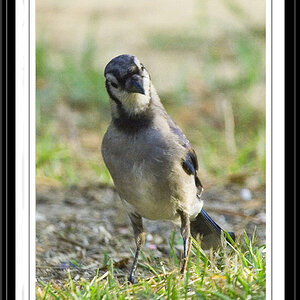
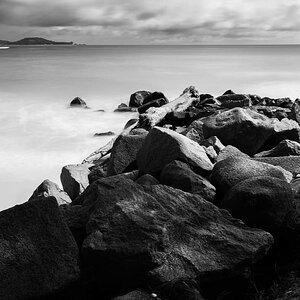
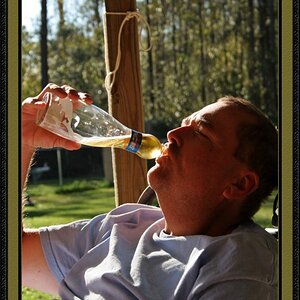
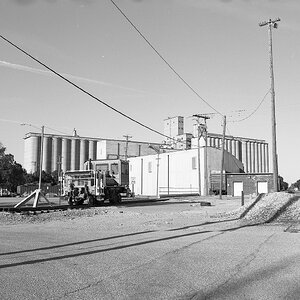
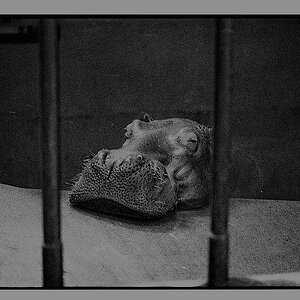

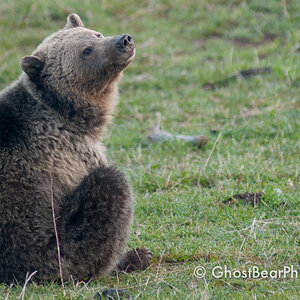
![[No title]](/data/xfmg/thumbnail/34/34132-7c7fbdcb2006703d33f975289561cd9d.jpg?1619736303)
